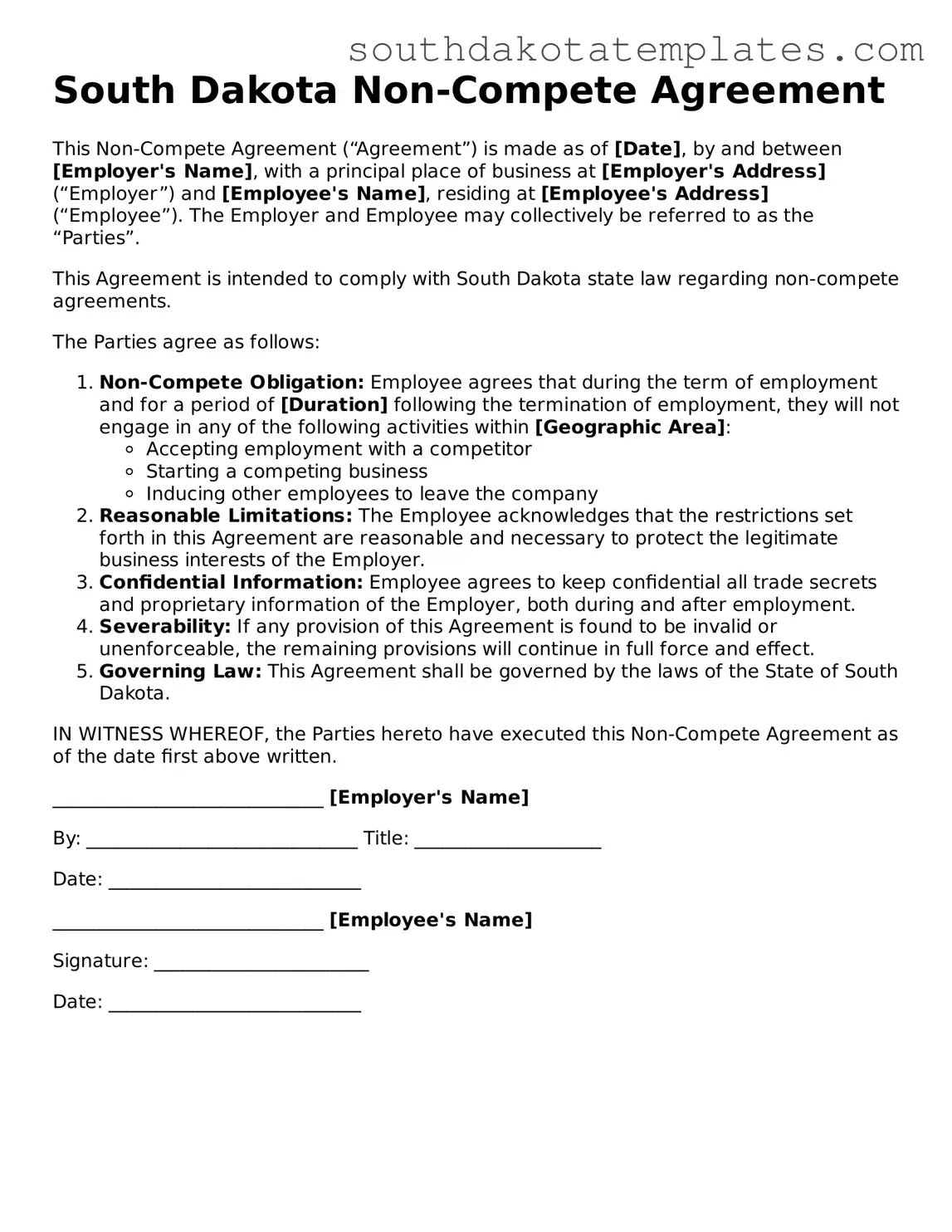In the ever-evolving landscape of employment and business relationships, non-compete agreements play a crucial role in protecting the interests of employers while also shaping the career paths of employees. South Dakota's Non-compete Agreement form is designed to establish clear boundaries and expectations between parties, ensuring that sensitive information and trade secrets remain secure. This form outlines essential elements such as the duration of the non-compete period, the geographical scope in which the restrictions apply, and the specific activities that are prohibited after employment ends. By understanding these key aspects, both employers and employees can navigate the complexities of non-compete agreements with greater confidence. Moreover, it's important to recognize that while these agreements can safeguard business interests, they must also adhere to state laws to be enforceable. This balance between protection and fairness is vital for fostering a healthy working environment in South Dakota.
